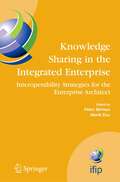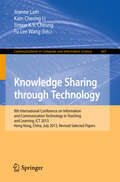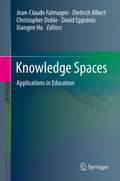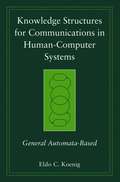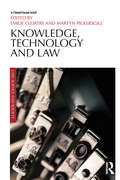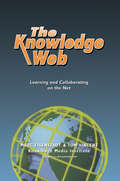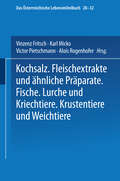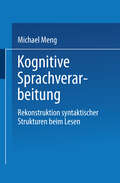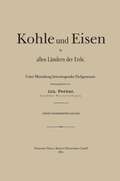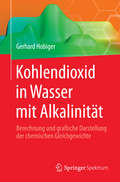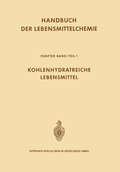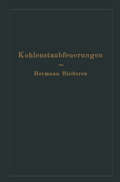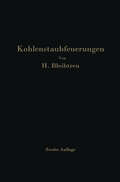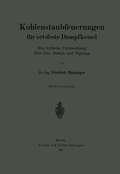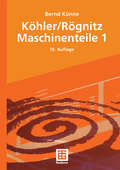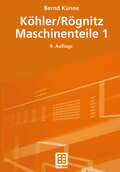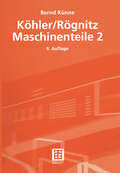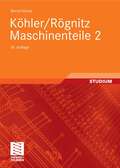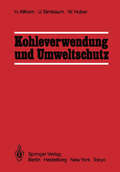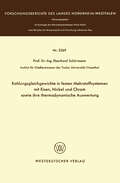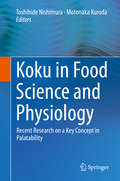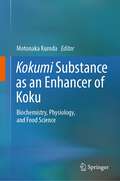- Table View
- List View
Knowledge, Service, Tourism & Hospitality: Proceedings of the Annual International Conference on Management and Technology in Knowledge, Service, Tourism & Hospitality 2015 (SERVE 2015), Bandung, Indonesia, 1-2 August 2015
by Abd Razak Zakaria Fonny Hutagalung Zuwati Binti Hasim Ford Lumban GaolThis proceedings volume contains papers presented at the 2015 International Conference on Management and Technology in Knowledge, Service, Tourism & Hospitality (SERVE 2015), covering a wide range of topics in the fields of knowledge and service management, web intelligence, tourism and hospitality. This overview of current state of affair
Knowledge Sharing in the Integrated Enterprise: Interoperability Strategies for the Enterprise Architect (IFIP Advances in Information and Communication Technology #183)
by Mark Fox Péter BernusEnterprise Architects, in their endeavor to achieve Enterprise Integration, have limited guidance on how best to use Enterprise Models and Modeling Tools to support their practice. It is widely recognized that the practice of engineering enterprises needs a number of models, but how to maintain the relation between these models with ease is still a problem. Model interoperability is an issue on multiople counts: - How to interchange models between enterprise modeling tools? - How to maintain the interdependencies between models - whether they describe the enterprise on the same level (but from different points of view), or from the same point of view (but on different levels of abstraction and granularity)? - How to maintain a coherent and evolving set of enterprise models in support onf continuous change processes? - How to use and reuse enterprise models as a knowledge resource? The answers to these questions are of great importance to anyone who is implementing ISO9001:2000 requirements, whether through using enterprise architecture practice or not - although it can be argued that a well executed architecture practice should satisfy ISO9001 without additional effort. This volume attacks the problem on three fronts: 1. Authors working in international standardisation and tool development as well as in enterprise modeling research present the latest developments in semantic integration; 2. Authors who are practitioners of, or conducting active research in, enterprise architecting methodologies give an account on the latest developments and strategic directions in architecture frameworks and methodologies; 3. Authors who use or develop information integration infrastructures present best practice and future trends of this aspect of enterprise integration. Chapters of this book include contributions to the International Conference on Enterprise Integration and Modelling Technology (ICEIMT'04), and those presented at the Design of Information Infrastructure Systems for Manufacturing (DIISM'04) Workshop. While DIISM is traditionally oriented at supporting manufacturing practice, the results have a far greater domain of applicability.
Knowledge Sharing Through Technology: 8th International Conference on Information and Communication Technology in Teaching and Learning, ICT 2013, Hong Kong,China, July 10-11, 2013 (Communications in Computer and Information Science #407)
by Jeanne Lam Kam Cheong Li Simon K. S. Cheung Fu Lee WangThis book constitutes the thoroughly revised selected papers of the 8th International Conference on Information and Communication Technology in Teaching and Learning, ICT 2013, held in Hong Kong, China, in July 2013. The 21 revised papers presented were carefully reviewed and selected from various submissions. The papers are organized in topical sections such as management and application of open education resources, application of ICT in support of knowledge sharing, application of mobile devices and social media to knowledge sharing, knowledge sharing for teaching and learning.
Knowledge Spaces: Applications in Education
by David Eppstein Xiangen Hu Jean-Claude Falmagne Dietrich Albert Christopher DobleThe book describes up-to-date applications and relevant theoretical results. These applications come from various places, but the most important one, numerically speaking, is the internet based educational system ALEKS. The ALEKS system is bilingual English-Spanish and covers all of mathematics, from third grade to the end of high school, and chemistry. It is also widely used in higher education because US students are often poorly prepared when they reach the university level. The chapter by Taagepera and Arasasingham deals with the application of knowledge spaces, independent of ALEKS, to the teaching of college chemistry. The four chapters by Albert and his collaborators strive to give cognitive interpretations to the combinatoric structures obtained and used by the ALEKS system. The contribution by Eppstein is technical and develops means of searching the knowledge structure efficiently.
Knowledge Structures for Communications in Human-Computer Systems: General Automata-Based (Practitioners #56)
by Eldo C. KoenigA comprehensive look at General automata and how it can be used to establish the fundamentals for communication in human-computer systems Drawing on author Eldo C. Koenig's extensive expertise and culling from his thirty-four previously published works, this seminal resource presents knowledge structures for communication in Human-Computer Systems (HCS) based on General automata. The resulting model provides knowledge representations for software engineering. Of the many features required for a method to achieve the desired communication in HCS, Knowledge Structures for Communications in Human-Computer Systems identifies six of them in great length-extracting and storing the knowledge of sentences; knowledge association; deductive processes; inferences; feedback; and sequencing of knowledge-along with illustrations for achieving them by the General Automata Method. After presenting the analysis for each feature, the book includes practical applications that illustrate the results. Koenig also describes algorithms and programs that achieve some of the features, and provides readers with additional algorithms and further research. Richly illustrated throughout to elucidate concepts, Knowledge Structures for Communications in Human-Computer Systems is an excellent teaching text suitable for both academic and industrial settings.
Knowledge, Technology and Law (Law, Science and Society)
by Emilie Cloatre Martyn PickersgillThe relationships between knowledge, technologies, and legal processes are central to the constitution of contemporary societies. As such, they have come to provide the focus for a range of academic projects, across interdisciplinary legal studies and the social sciences. The domains of medical law and ethics, intellectual property law, environmental law and criminal law are just some of those within which the pervasive place and ‘impact’ of technoscience is immediately apparent. At the same time, social scientists investigating the making of technology and expertise - in particular, scholars working within the tradition of science and technology studies - frequently interrogate how regulation and legal processes, and the making of knowledge and technologies, are intermingled in complex ways that come to shape and define each other. This book charts the important interface between studies of law, science and society, as explored from the perspectives of socio-legal studies and the increasingly influential field of science and technology studies. It brings together scholars from both areas to interrogate the joint roles of law and science in the construction and stabilization of socio-technical networks, objects, and standards, as well as their place in the production of contemporary social realities and subjectivities.
Knowledge, Technology and Law (Law, Science and Society)
by Emilie Cloatre Martyn PickersgillThe relationships between knowledge, technologies, and legal processes are central to the constitution of contemporary societies. As such, they have come to provide the focus for a range of academic projects, across interdisciplinary legal studies and the social sciences. The domains of medical law and ethics, intellectual property law, environmental law and criminal law are just some of those within which the pervasive place and ‘impact’ of technoscience is immediately apparent. At the same time, social scientists investigating the making of technology and expertise - in particular, scholars working within the tradition of science and technology studies - frequently interrogate how regulation and legal processes, and the making of knowledge and technologies, are intermingled in complex ways that come to shape and define each other. This book charts the important interface between studies of law, science and society, as explored from the perspectives of socio-legal studies and the increasingly influential field of science and technology studies. It brings together scholars from both areas to interrogate the joint roles of law and science in the construction and stabilization of socio-technical networks, objects, and standards, as well as their place in the production of contemporary social realities and subjectivities.
The Knowledge Web: Learning and Collaborating on the Net (Open and Flexible Learning Series)
by Eisenstadt, Marc Vincent, TomFeaturing contributions from staff and associates of the Knowledge Media Institute at the UK Open University, this text provides a glimpse into the wide variety of projects undertaken in the development and assessment of distance learning technologies.
The Knowledge Web: Learning and Collaborating on the Net (Open and Flexible Learning Series)
by Eisenstadt, Marc Vincent, TomFeaturing contributions from staff and associates of the Knowledge Media Institute at the UK Open University, this text provides a glimpse into the wide variety of projects undertaken in the development and assessment of distance learning technologies.
Kochsalz. Fleischextrakte und Ähnliche Präparate. Fische. Lurche und Kriechtiere. Krustentiere und Weichtiere
by Maximilian Fizia Josef Fiebiger Vinzenz Fritz Karl Micko Viktor Pietschmann Alois Rogenhofer Architektur Stiftung ÖsterreichDieser Buchtitel ist Teil des Digitalisierungsprojekts Springer Book Archives mit Publikationen, die seit den Anfängen des Verlags von 1842 erschienen sind. Der Verlag stellt mit diesem Archiv Quellen für die historische wie auch die disziplingeschichtliche Forschung zur Verfügung, die jeweils im historischen Kontext betrachtet werden müssen. Dieser Titel erschien in der Zeit vor 1945 und wird daher in seiner zeittypischen politisch-ideologischen Ausrichtung vom Verlag nicht beworben.
Kognitive Sprachverarbeitung: Rekonstruktion syntaktischer Strukturen beim Lesen
by Michael MengDer Autor untersucht die Prozesse bei der syntaktischen Verarbeitung von lokal ambigen Strukturen. Anhand von Leseexperimenten zeigt der Autor, daß sich die empirischen Befunde einheitlich interpretieren lassen.
Kohlendioxid in Wasser mit Alkalinität: Berechnung und grafische Darstellung der chemischen Gleichgewichte
by Gerhard HobigerKohlendioxid ist eine bedeutende Verbindung in unserer Atmosphäre. Mit Wasser ergibt sie Kohlensäure und ist daher in allen Wässern zugegen. In welchem Ausmaß und in welcher Form Kohlendioxid im Wasser vorliegt, kann mit einfachen mathematischen Gleichungen berechnet werden. Wie diese Gleichungen hergeleitet und was damit ausgesagt werden kann, wird in diesem Buch an Hand von 3D-Grafiken ausführlich gezeigt und diskutiert. Die angegebenen Gleichungen können zur Berechnung von wasserchemischen Parametern herangezogen werden.
Kohlenstaubfeuerungen: Bericht, dem Reichskohlenrat erstattet im Auftrage seines technisch-wirtschaftlichen Sachverständigen-Ausschusses für Brennstoffverwendung
by Hermann BleibtreuDieser Buchtitel ist Teil des Digitalisierungsprojekts Springer Book Archives mit Publikationen, die seit den Anfängen des Verlags von 1842 erschienen sind. Der Verlag stellt mit diesem Archiv Quellen für die historische wie auch die disziplingeschichtliche Forschung zur Verfügung, die jeweils im historischen Kontext betrachtet werden müssen. Dieser Titel erschien in der Zeit vor 1945 und wird daher in seiner zeittypischen politisch-ideologischen Ausrichtung vom Verlag nicht beworben.
Kohlenstaubfeuerungen: Bericht, dem Reichskohlenrat erstattet im Auftrage seines Technisch-Wirtschaftlichen Sachverständigen-Ausschusses für Brennstoffverwendung
by Hermann BleibtreuDieser Buchtitel ist Teil des Digitalisierungsprojekts Springer Book Archives mit Publikationen, die seit den Anfängen des Verlags von 1842 erschienen sind. Der Verlag stellt mit diesem Archiv Quellen für die historische wie auch die disziplingeschichtliche Forschung zur Verfügung, die jeweils im historischen Kontext betrachtet werden müssen. Dieser Titel erschien in der Zeit vor 1945 und wird daher in seiner zeittypischen politisch-ideologischen Ausrichtung vom Verlag nicht beworben.
Kohlenstaubfeuerungen für ortsfeste Dampfkessel: Eine kritische Untersuchung über Bau, Betrieb und Eignung
by Friedrich MünzingerDieser Buchtitel ist Teil des Digitalisierungsprojekts Springer Book Archives mit Publikationen, die seit den Anfängen des Verlags von 1842 erschienen sind. Der Verlag stellt mit diesem Archiv Quellen für die historische wie auch die disziplingeschichtliche Forschung zur Verfügung, die jeweils im historischen Kontext betrachtet werden müssen. Dieser Titel erschien in der Zeit vor 1945 und wird daher in seiner zeittypischen politisch-ideologischen Ausrichtung vom Verlag nicht beworben.
Köhler/Rögnitz Maschinenteile 1
by Bernd KünneDie Maschinenteile von Köhler/Rögnitz sind ein anerkanntes Standardwerk in der Maschinenelemente-Ausbildung ingenieurtechnischer Studiengänge. Das Lehr- und Arbeitsbuch vermittelt alle erforderlichen Kenntnisse über die wesentlichen Maschinenelemente. Neben den klassischen Gebieten des Maschinenbaus liefert der Köhler/Rögnitz auch Fachwissen planerischer, organisatorischer und logistischer Bereiche. Die Darstellung des Stoffes führt dabei von der Aufgabenstellung über die Funktion, Berechnung und Gestaltung zu Lösungsmöglichkeiten. Hierbei werden die erforderlichen Berechnungsgleichungen hergeleitet, die physikalischen Abhängigkeiten aufgezeigt und Problembereiche betrachtet. Für die 10. Auflage wurden alle zitierten Normen, Richtlinien und Literaturhinweise vollständig aktualisiert. Alle Kapitel sind mit Blick auf die Anforderungen gegenwärtiger Lehrinhalte und die Ingenieurpraxis überarbeitet worden. Besonderer Wert wurde auf die Überarbeitung des einführenden Kapitels zum Konstruieren und Gestalten von Maschinenteilen gelegt. Für die Konstruktionspraxis besonders hilfreich sind die zahlreichen gegenübergestellten Beispiele zum zweckmäßigen und unzweckmäßigen Konstruieren.
Köhler/Rögnitz Maschinenteile 1
by Bernd KünneDie Maschinenteile von Köhler/Rögnitz sind ein anerkanntes Standardwerk in der Maschinenelemente-Ausbildung ingenieurtechnischer Studiengänge. Das Lehr- und Arbeitsbuch vermittelt alle erforderlichen Kenntnisse über die wesentlichen Maschinenelemente. Neben den klassischen Gebieten des Maschinenbaus liefert der "Köhler/Rögnitz" auch Fachwissen planerischer, organisatorischer und logistischer Bereiche. Die Darstellung des Stoffes führt dabei von der Aufgabenstellung über die Funktion, Berechnung und Gestaltung zu Lösungsmöglichkeiten. Hierbei werden die erforderlichen Berechnungsgleichungen hergeleitet, die physikalischen Abhängigkeiten aufgezeigt und Problembereiche betrachtet. Für die 9. Auflage wurden sämtliche Normen aktualisiert und an europäische und internationale Standards angepasst. Um die Inhalte deutlich kompakter darstellen zu können, wurden die bisher beigelegten Arbeitsblätter in die Kapitel eingearbeitet.
Köhler/Rögnitz Maschinenteile 2
by Bernd KünneDer Köhler/Rögnitz ist ein anerkanntes Standardwerk in der Maschinenelemente-Ausbildung ingenieurtechnischer Studiengänge. Seine Stärke ist die analytische Herangehensweise mit der es gelingt, die Technische Mechanik mit den Lehrinhalten des Faches Maschinenelemente zu verbinden und damit für alle wesentlichen Konstruktionselemente auf dem Fundament der Mechanik und Werkstoffkunde ein grundlegendes Verständis aufzubauen. Der Köhler/Rögnitz liefert auch Fachwissen planerischer, organisatorischer und logistischer Bereiche. Die Darstellung des Stoffes führt von der Aufgabenstellung über die Funktion, Berechnung und Gestaltung zu Lösungsmöglichkeiten. Die erforderlichen Berechnungsgleichungen werden hergeleitet, die physikalischen Abhängigkeiten aufgezeigt und Problembereiche betrachtet. Für die 9. Auflage wurden u.a. sämtliche Normen aktualisiert und an europäische und internationale Standards angepasst. Um die Inhalte deutlich kompakter darstellen zu können, wurden die bisher beigelegten Tabellen, Diagramme und Zahlenwerte in die Kapitel eingearbeitet.
Köhler/Rögnitz Maschinenteile 2
by Bernd KünneDer Köhler/Rögnitz ist das anerkannte Standardwerk in der Maschinenelemente-Ausbildung ingenieurtechnischer Studiengänge. Die analytische Herangehensweise ermöglicht es, die Technische Mechanik mit den Lehrinhalten des Faches Maschinenelemente zu verbinden und damit für alle wesentlichen Konstruktionselemente auf dem Fundament der Mechanik und Werkstoffkunde ein grundlegendes Verständnis aufzubauen. Die Darstellung des Stoffes führt von der Aufgabenstellung über die Funktion, Berechnung und Gestaltung zu Lösungsmöglichkeiten. Die erforderlichen Berechnungsgleichungen werden hergeleitet, die physikalischen Abhängigkeiten aufgezeigt und Problembereiche betrachtet. Die 10. Auflage wurde in wesentlichen Bereichen unter der Berücksichtigung der technischen Entwicklungen überarbeitet und neu gestaltet. Neben einer inhaltlichen Überarbeitung wurden auch einige formale Änderungen vorgenommen. Weiterhin wurden die Normen den internationalen Standards entsprechend aktualisiert.
Kohlungsgleichgewichte in festen Mehrstoffsystemen mit Eisen, Nickel und Chrom sowie ihre thermodynamische Auswertung (Forschungsberichte des Landes Nordrhein-Westfalen)
by Eberhard SchürmannKoku in Food Science and Physiology: Recent Research on a Key Concept in Palatability
by Toshihide Nishimura Motonaka KurodaThis is the first book to explore the science underlying the concept of “koku”, which is central to an understanding of the palatability of food within Japanese cuisine and is attracting increasing interest among food scientists and professionals worldwide. Koku may be defined as the sensation that results from the complexity of the food (i.e., its richness or body), its lingering aftertaste or persistence, and its heartiness in terms of taste, aroma, and texture. A variety of substances have been found to impact significantly on koku, including umami substances, phytosterols, certain aromatic compounds, and kokumi substances. In Koku – Food Science and Physiology, readers will find full explanation of the conceptual aspects and the latest research results on a wide range of topics, including the relevant flavor chemistry and sensory analysis. Written by leading scientists in the field, the book will be a valuable resource for students and researchers in the fields of food chemistry, nutritional science, taste physiology, and neuroscience, as well as for professionals in the food industry.
Kokumi Substance as an Enhancer of Koku: Biochemistry, Physiology, and Food Science
by Motonaka KurodaThis book provides the basic concepts and latest findings on kokumi substances. It covers not only the topics related to food chemistry, but also the biochemical and physiological mechanisms of the perception of kokumi substances. Food palatability is determined by many factors, including taste, aroma, texture, color, physiological condition, and circumstances. The attribute called “koku” is used in Japan to express delicious foods. The definition of koku attribute was previously proposed to be caused by the sensation of richness, body, lingering (continuity), and mouthfulness in terms of taste, aroma, and texture. Kokumi substance is one of the taste-related koku enhancers and is defined as a substance that enhances complexity, richness (body), and lastingness (continuity), although it has no taste itself at the dose. The topics in this book cover physiological studies, including the receptor mechanism, taste nerve recording, and human brain responses using functional MRI. It also discusses the sensory characteristics of kokumi substances when added to foods and the effect of kokumi substances on the satiety. The intended readers are university students, researchers and technologists in food science, food chemistry, nutritional sciences, taste physiology, and neuroscience. Non-expert readers interested in food palatability and the deliciousness of foods may also find this book useful.

